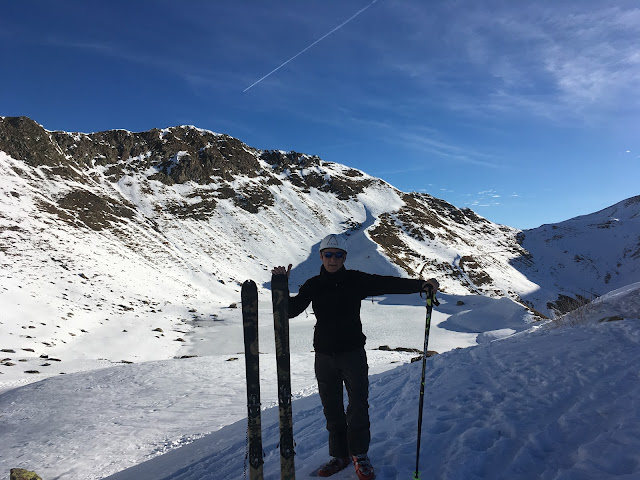Via Ferrata Sorrosal, Broto, Huesca, Spain
En torno a las 8 de la mañana, Eva y yo salimos desde Zaragoza con destino a Broto, tomamos la nueva carretera que une Sabiñánigo con Fiscal, después continuamos hasta Broto, atravesamos el pueblo y bajamos por una calle que hay antes de cruzar el puente sobre el río Ara, aparcando el coche en el pequeño que hay a la izquierda del puente.
At about 8am, Eva and I went from Zaragoza to Broto, we took the new road that joins Sabiñánigo with Fiscal, then we follow the signs to Broto, we cross the village and go down a street that goes to the bridge of the Ara river, we parked in a small car park located at the right of the bridge.
Aunque hacía un gran día, tuvimos que esperar a que saliera el sol, ya que en la zona de la ferrata hacía bastante frío, aprovechamos la espera para ir a ver la cascada y tomar un café en el bar del aparcamiento.
It was a great day, but we have to wait for the sun to rise because in the area of the ferrata it was quite cold, we used that time to visit the waterfall and have a coffee in the bar in front of the car park.
El inicio de la ferrata está a 5 minutos andando justo a la izquierda de la cascada de Sorrosal.
The start of the ferrata is 5 minutes walk, just to the left of the Sorrosal waterfall.
La ferrata en sus primeros tramos está equipada con algunas grapas y clavijas, siempre girando hacia la derecha hasta llegar a un tramo con 5 escaleras, teniendo siempre visible en nuestra derecha la cascada, la última escalera nos deposita en una gruta que tras cruzarla nos introduce en el barranco de Sorrosal.
The ferrata in its first sections is equipped with some staples and pins, always turning to the right until reaching a section with 5 ladders, always having the waterfall visible on our right, the last ladder reaches to the entrance of a cave that after going through it took us inside of the Sorrosal canyon.
Continuamos por la margen izquierda del barranco hasta llegar a un puente con sirga y cable a ambos lados, una vez en la margen derecha vamos ganando altura con la ayuda de grapas, sirgas y cadenas.
Al llegar al bosque seguimos la sirga hasta el final de la ferrata.
We continued along the left side of the canyon until we reached a bridge made with 3 cables, one at the same level that the ground and 2 on the sides 1 meter above to belay and hold yourself. Once on the right side of the canyon, we started to climb up with the help of staples, ropes and chains.
When we reached the forest we follow the cable until the end of the via ferrata.
We returned to the village along the path that connects Fragen with Broto.
























































